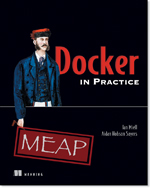

CI as Code Part III: Dynamic Jenkins-Swarm Example
source link: https://zwischenzugs.com/2016/02/25/922/
Go to the source link to view the article. You can view the picture content, updated content and better typesetting reading experience. If the link is broken, please click the button below to view the snapshot at that time.

Introduction
This article continues on from the previous two posts outlining a method of provisioning Jenkins instances on demand programatically using docker-compose.
In this post we take this one step further by demonstrating how a Docker container can dynamically add itself as a client to the Jenkins server.
Overview
This updated diagram shows the architecture at part III

The ‘Jenkins-Swarm Docker Slave’ is new to this example. It is similar to the ‘Jenkins SSH Slave’ except that it connects itself to the Jenkins server as a slave running as a Docker container. Using this as a template you can dynamically add multiple clients to the Jenkins server under the ‘swarm’ tag.
Note: Do not confuse ‘Jenkins Swarm’ with ‘Docker Swarm’.
They are two different things: Jenkins Swarm allows clients to
dynamically attach themselves to a server and run jobs, while
Docker Swarm is a clustering solution for Docker servers.
New plugins
In addition, these new plugins have been added:
swarm – allow dynamic jenkins clients to be added via port 50000
backup – backs up configuration on demand (basic configuration set up by scripts)
jenkinslint – gives advice on your jenkins setup
build-timeout – allow a build timeout
docker-build-publish – build and publish Docker projects to the Docker Hub
greenballs – green balls for success, not blue!
This is now baked into v3.0 of the git repo.
Video
Skip to the end for a demo of a simple job running on a swarm node.
Currently co-authoring a book on Docker:
Get 39% off with the code 39miell2
Recommend
About Joyk
Aggregate valuable and interesting links.
Joyk means Joy of geeK
